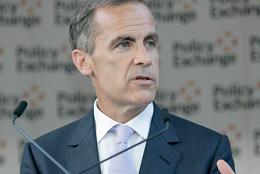Carney must work to grow Canada’s economic pie

Commentary
By Jock Finlayson
After scoring a narrow victory in the federal election, Prime Minister Mark Carney and his incoming cabinet will confront a host of pressing issues. Dealing with the erratic and sometimes menacing Donald Trump—and navigating the multi-front tariff war the U.S. president has launched—is undoubtedly job one. Meanwhile, the refreshed Liberal government will face an enfeebled Canadian economy that may be on the cusp of a recession triggered by Trump’s mad-cap trade policies and dwindling economic growth across much of the world. Finding ways to implement—and pay for—the grab-bag of costly promises in the Liberal Party’s election platform will also tax the abilities of Carney and his ministers.
Beyond the immediate imperative of managing relations with the United States, the top priority for the Carney team must be creating the conditions for stronger economic growth at home. Under Justin Trudeau, the Liberal government was preoccupied with social policy, income redistribution, climate change and Indigenous reconciliation. As former finance minister Bill Morneau has written, Trudeau displayed zero interest in bolstering the underlying foundations of Canadian prosperity, which languished on his watch. Hopefully, Carney’s administration won’t make the same mistake.
Unfortunately, team Carney starts with a weak economic hand. Canada has been losing global market share in almost all of our export-oriented industries. Productivity is stagnant, and business investment is insufficient even to offset ongoing deprecation of the “capital stock”—the buildings, equipment and machinery owned and used by firms across Canada. Net foreign direct investment flows have turned sharply negative, with Canadian firms investing more abroad than foreign companies invest in Canada—a clear sign of our waning competitiveness.
Even more worryingly, Canada’s real gross domestic product (GDP) per person—the total income that households and businesses generate, divided by the population—shrank by 1 per cent between 2018 and 2023, before dipping again last year. During this time period, we’ve been near the bottom among 38 advanced countries on this basic metric of economic success and living standards.
In fact, Canada’s economy today is scarcely larger than it was a decade ago (after adjusting for population growth and inflation). Comparisons with the U.S. make for particularly painful reading. Between the first quarter of 2016 and the fourth quarter of last year, inflation-adjusted per-person economic output grew by just 2.5 per cent in Canada compared to 18.7 per cent in the U.S. This speaks both to the economic failures of the Trudeau era and the urgent need for Ottawa to change course.
So, what to do?
Turning around Canada’s lacklustre economy will require a sharp turn away from the policies of the Trudeau era. - Jock Finlayson is a senior fellow of the Fraser Institute.









